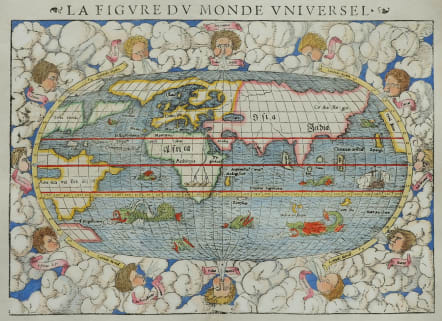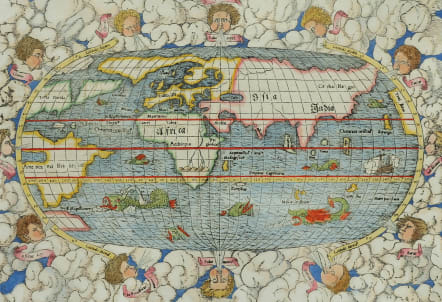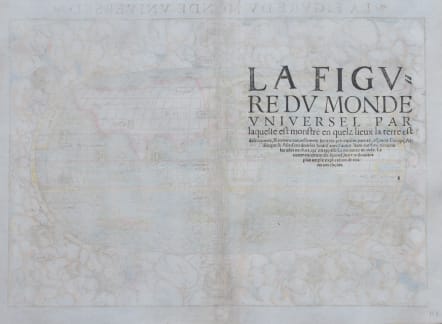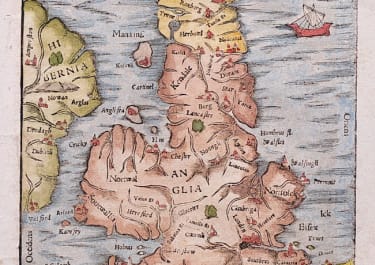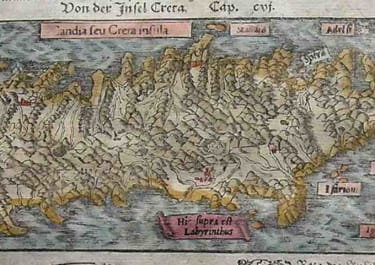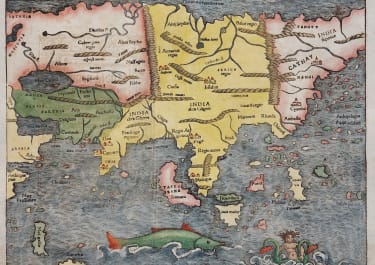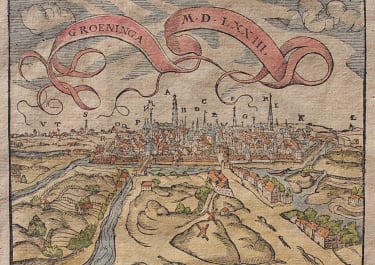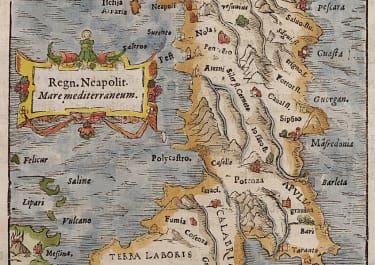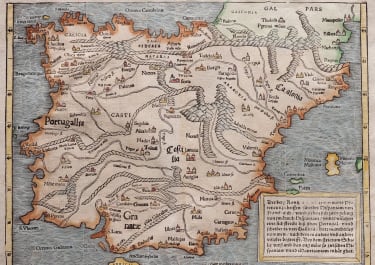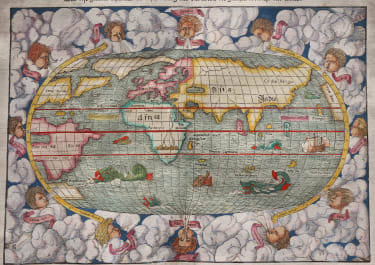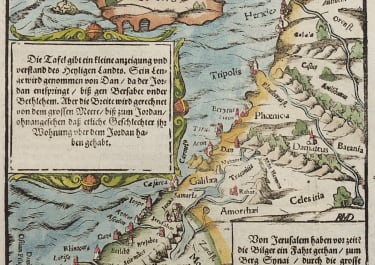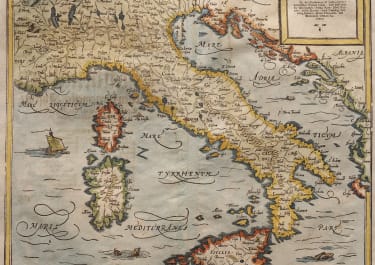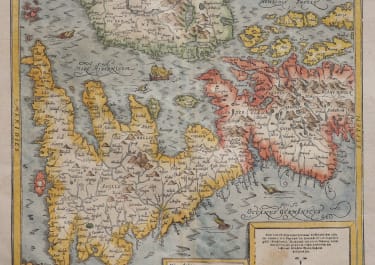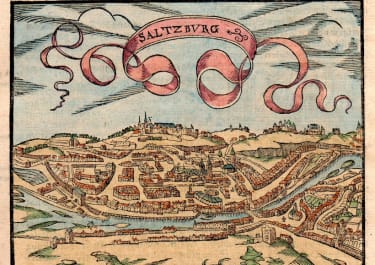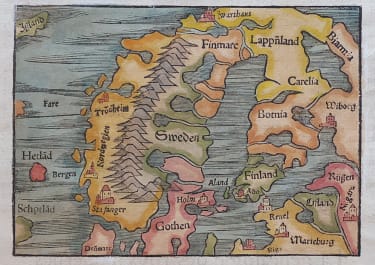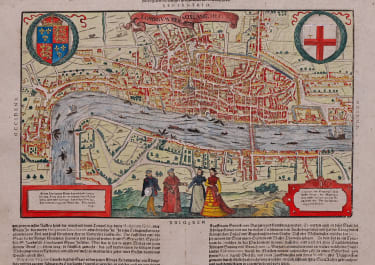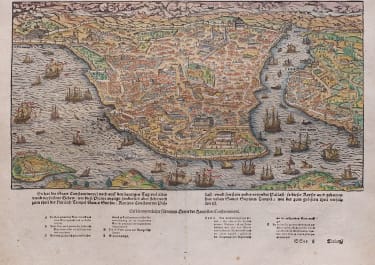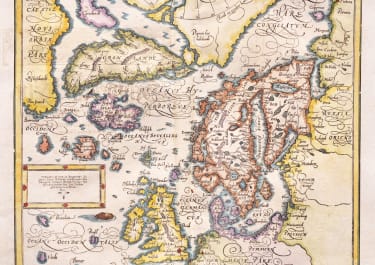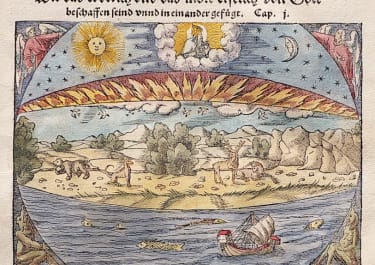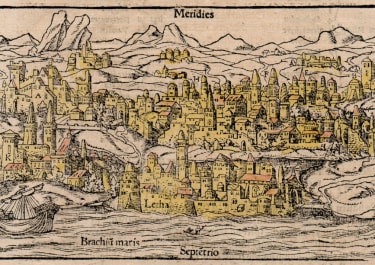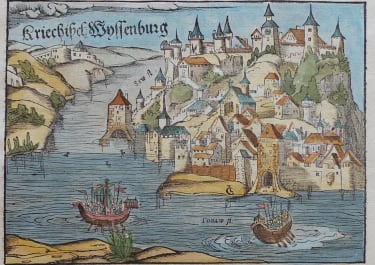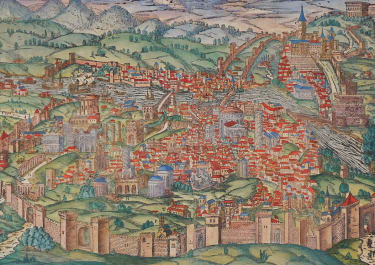LA FIGURE DU MONDE UNIVERSELLE
£2750
Sought after and important mid Sixteenth century World map. This is a beautiful example of the second woodblock world that was cut for the "Cosmographia" and "Geographia", and the initials of the wood engraver, David Kandel, can be seen in the bottom left hand corner.
The mapping of America is interesting , only fifty years after Columbus: the basic shape of both North and South is recognisable, there are several mistaken assumptions: 'Terra Florida' is connected to the north-east by only a narrow isthmus, based on Verrazzano's mistaken belief that Chesapeake Bay was the Indian Ocean. Greenland is joined on to Scandinavia; and the west coast appears as 'Temistitian', the general name for Mexico, on the far right of the map. In the east, 'Zanzibar', 'Taprobana' and 'Java' are all marked, and 'Zipangu' (Japan) also appears having been visited by Europeans for the first time ten years before.
Ebellished with fierce sea monsters and a sailing war ship. Surrounding the earth are billowing clouds and numerous 12 wind gods reflecting the wind characteristics. Each of the windheads is named, and their appearance on this map and other world maps of the period is reflective of the age of the galley ship, whose performance was highly dependent on wind direction.
Excellent hand colour
No repairs tears etc . Full wide margins
An important map in very good condition.
code : M5393
Cartographer : Sebastian Munster
Date : 1556 Basel
Size : 28*38 cms inc title Sheet 32*42 cms
availability : Available
Price : £2750
Originally a scholar studying Hebrew, Greek and mathematics, Sebastian Munster (1489-1552) eventually specialised in mathematical geography and cartography. It was this double ability - as a classicist and mathematician - that was to prove invaluable when Munster set himself to preparing new editions of Solinus’ “Memorabilia” and Mela’s “De Situ Orbis”, two classical descriptive geographies containing maps, and his own two greatest works, the “Geographia” and “Cosmographia”. These reflect the widespread interest in classical texts, which were being rediscovered in the fifteenth century, and being disseminated in the later fifteenth and sixteenth century, through the new medium of printing.
The “Geographia” was a translation of Ptolemy’s landmark geographical text, compiled in about 150 AD., illustrated with maps based on Ptolemy’s calculations, but also, in recognition of the increased geographical awareness, contains a section of modern maps. In the first edition of the “Geographia”, Munster included 27 ancient Ptolemaic maps and 21 modern maps, printed from woodblocks. Subsequent editions of the “Cosmographia” were to contain a vast number of maps and plans.
One consequence of Munster’s work was the impetus it gave to regional mapping of Germany, but Munster was also the first cartographer to produce a set of maps of the four continents on separate maps. Most importantly, through his books (the “Geographia” and “Cosmographia” alone ran to over forty editions in six languages), Munster was responsible for diffusing the most up-to-date geographical information throughout Europe.

